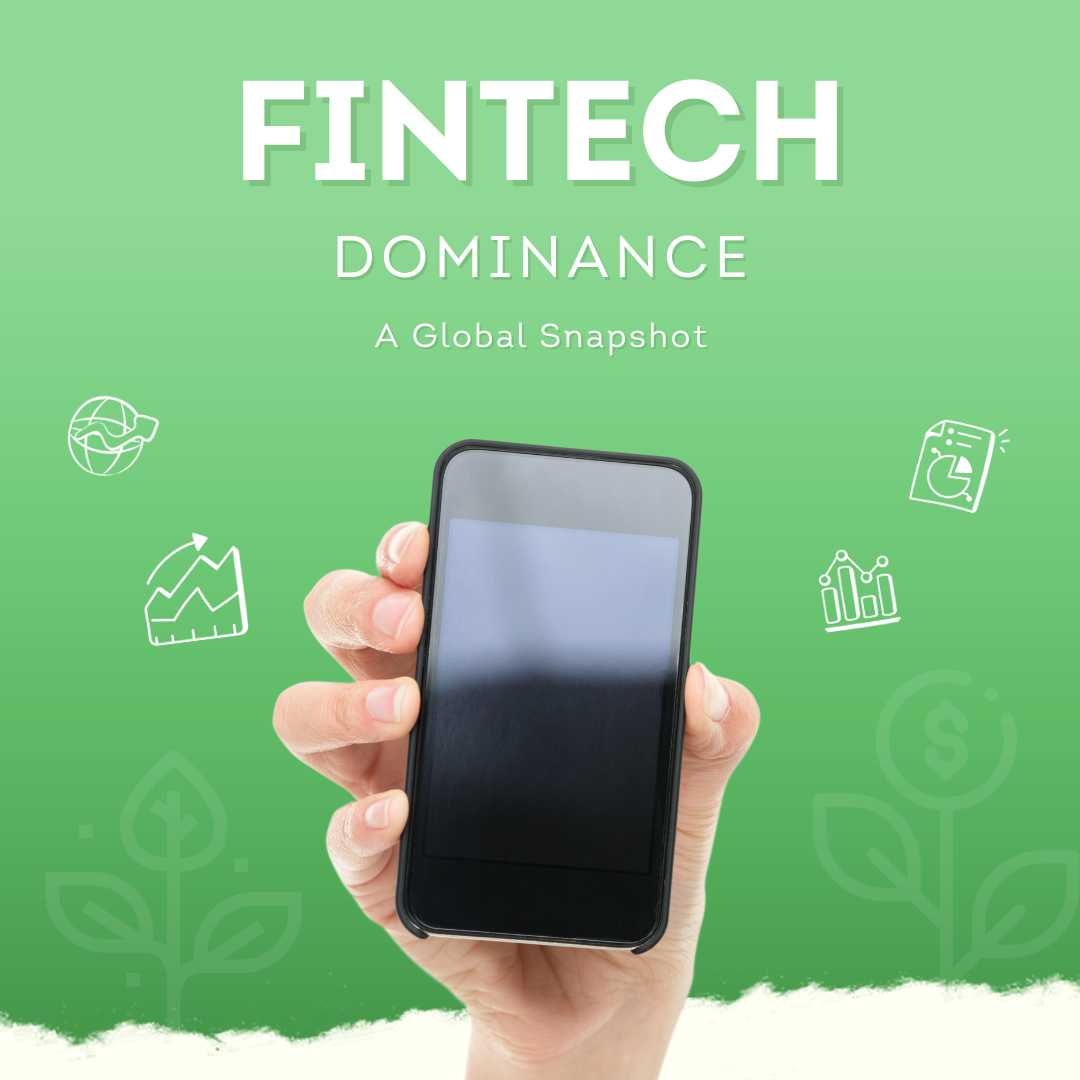Swedish fintech Klarna – best known as a “buy now, pay later” (BNPL) pioneer – has officially filed for a U.S. IPO, aiming to list on the NYSE under the ticker KLAR. The company’s registration statement, made public in March 2025, marks one of the most anticipated fintech debuts since the market’s post-2021 chill. This report analyzes Klarna’s IPO timing, valuation, and strategic motivations, and compares its move with other fintech hopefuls like Stripe, Chime, and Revolut. We also examine the state of the BNPL sector, signs of an IPO market revival, and the regulatory landscape shaping fintech’s future. Policymakers and investors alike are watching closely – Klarna’s U.S. listing is more than just one company’s milestone; it’s a bellwether for fintech confidence and policy in 2025.

Table of Contents
ToggleKlarna’s IPO: Timing, Valuation, and U.S.-Listing Strategy
Why Now? Klarna’s decision to go public comes after a prolonged “IPO winter” for tech companies. Fintech IPOs boomed in 2021 but then stalled amid rising interest rates and volatile markets. By late 2024, however, risk appetite in equities began “slowly picking up”. Klarna confidentially filed with the SEC in November 2024 and waited for the right window. Company executives say the “stars aligned” for an IPO as market conditions improved and Klarna’s own finances turned a corner. Indeed, in 2024 Klarna posted a small profit (more on that below), signaling a shift from its earlier growth-at-all-costs strategy to a more sustainable footing.
Valuation Journey: Just two years ago, Klarna’s valuation was in freefall – a dramatic comedown from its pandemic-era peak. Between mid-2020 and mid-2021, Klarna’s valuation skyrocketed from about $5.5 billion to $46.5 billion in a series of fundraising rounds, making it Europe’s most valuable startup at the time. That meteoric rise (fueled by venture capital optimism during the e-commerce boom) was followed by a harsh reality check in 2022: amid tightening monetary policy and investor skepticism, Klarna raised an $800 million down-round at just $6.7 billion – an 85% collapse from its peak. The company that once commanded a stratospheric $45.6 billion valuation in June 2021 saw its worth slashed to a fraction by July 2022. This whiplash reflects broader market sentiment: fintech darlings were not immune to the post-pandemic recalibration of tech valuations.
Now, Klarna is plotting an IPO comeback with a target valuation reportedly above $15 billion. The company aims to raise at least $1 billion in the offering. While $15B is only one-third of its 2021 high, it’s more than double the 2022 trough – indicating that investors see a partial recovery in Klarna’s fortunes. Achieving this valuation will depend on market reception, but early signals are positive: IPO volumes in early 2025 have rebounded, with $8.8 billion raised in the first two months of the year – the highest for that period since 2022. Klarna’s listing, if successful, could further “signal renewed investor confidence in high-growth fintech companies”, according to analysts. Underwriters Goldman Sachs, J.P. Morgan, and Morgan Stanley are leading the charge, indicating a strong institutional push behind the deal.
U.S. vs. Europe – Choosing New York: Notably, Klarna opted for New York over London for its listing, a decision with symbolic and practical implications. As a Swedish company, one might expect Klarna to consider European exchanges, but CEO Sebastian Siemiatkowski and his backers have long hinted at the advantages of a U.S. IPO. The U.S. capital market offers deeper liquidity and higher tech valuations, making it attractive for a fintech seeking growth-hungry investors. In contrast, London’s stock market has struggled to attract big tech IPOs lately – a point underscored by Revolut’s CEO, who said it would be “not rational” to list in London given the U.S.’s far superior liquidity and investor base. (London even charges a 0.5% stamp duty on share purchases, a friction U.S. markets don’t have.) Klarna’s choice is thus “another blow for Europe’s biggest stock-exchange operator” (the London Stock Exchange), which already saw UK-based chipmaker Arm snub it in favor of New York last year.

From a strategic perspective, listing in the U.S. also aligns with Klarna’s business footprint. The company has made the U.S. a “principal focus” for growth since launching here in 2015. As of 2024, 42.8 million American consumers use Klarna – a huge chunk of its user base. Many major U.S. retailers (Nike, Sephora, Instacart, etc.) offer Klarna at checkout. With such U.S. exposure, Klarna likely seeks the valuation premium and analyst coverage that come with being a U.S.-traded fintech alongside peers like Affirm. In short, New York isn’t just a financial center – it’s where Klarna’s competition and customers are, and where investors best understand its sector.
Financial Snapshot: Klarna’s IPO filing revealed improving finances that bolster its timing. In the year ended Dec 31, 2024, Klarna’s revenue jumped 24% to $2.81 billion, a sign that consumer adoption of BNPL and Klarna’s expansion into new services (like its shopping app features) are still driving growth. Perhaps more crucially, Klarna swung back to profitability – reporting a $21 million net profit for 2024 (about $0.01 per share) versus a $244 million loss the year prior. That marks a dramatic turnaround – the company had been bleeding cash during its growth spree, but cost cuts and higher margins now have it near break-even. (Klarna famously was profitable for many years in its early history, before expansion into the U.S. and the BNPL boom pressures drove it into losses.)
Still, potential investors will note some caveats: Klarna’s filing disclosed it is working to fix a “material weakness” in its financial reporting systems– essentially an internal controls issue that must be resolved to satisfy public-company accounting standards. Additionally, the company flagged that Sweden’s consumer protection agency is investigating its marketing practices (more on regulatory headwinds later). These risk factors, while not uncommon in IPOs, underscore that Klarna’s path to Wall Street isn’t without hurdles. The IPO’s completion is also contingent on market conditions; the company cautions there’s “no assurance” the offering will be completed or on what timeline. In other words, if markets turn south or if valuation expectations aren’t met, Klarna could still hit pause – though current sentiment suggests it’s moving full steam ahead for an early Q2 2025 debut.
Comparing Klarna’s IPO to Fintech Peers: Stripe, Chime, Revolut & More
Klarna’s public listing will be a temperature check for the broader fintech sector, and other unicorns are watching closely. After the 2022–2023 drought, a queue of major fintechs is lining up for potential IPOs – with Klarna potentially the first out the gate. How does Klarna’s move stack up against peers like Stripe, Chime, and Revolut?
- Stripe: The U.S. payments processor (and world’s most valuable private fintech) is the giant lurking in the wings. Stripe was last valued at $91.5 billion in a 2021 secondary sale, but had to raise capital at a lowered $50 billion valuation in 2023 to address liquidity for employees. The company has reportedly been preparing for an IPO when conditions improve, but has taken a cautious approach. Stripe’s size and ubiquity in online payments make its offering a potential blockbuster whenever it comes. A successful Klarna listing could “reopen the IPO window” and give Stripe confidence to proceed, whereas any stumble might signal Stripe to wait longer. Stripe and Klarna aren’t direct competitors (Stripe focuses on payment infrastructure for merchants, not consumer lending), but they symbolize the pent-up supply of fintech IPOs.
- Chime: San Francisco-based Chime, a leading U.S. digital bank (or “neobank”), has also been eyeing the public markets. Chime confidentially filed for an IPO, targeting 2025 for a debut. The company, which offers no-fee checking accounts and earned wage advances to over 22 million users, reached a $25 billion valuation in 2021. However, fintech valuations have shifted – some reports suggest Chime might aim for around $10–15 billion now in an IPO, aligning with more modest revenue multiples in the sector. Like Klarna, Chime has strong Sequoia Capital backing and has delayed going public until it could show more profitability. Chime’s fate may parallel Klarna’s: both are consumer fintechs that grew rapidly, faced valuation resets, and now must convince public investors of their unit economics. Chime will surely be benchmarking Klarna’s reception – e.g., if Klarna secures a rich multiple of revenue, Chime can argue for a premium valuation too, and vice versa.
- Revolut: UK-based Revolut – a global digital banking super-app – is another heavyweight that has kept markets guessing. Revolut was last valued at $33 billion in 2021, making it Europe’s most valuable fintech at one point. The company has since become profitable and reportedly hit $1 billion+ in annual revenue, yet it has delayed IPO plans amid regulatory hurdles (it’s still seeking a UK banking license) and accounting delays. Revolut’s CEO Nik Storonsky has been blunt about his IPO preference: listing in the U.S. rather than London. He argues London’s market “can’t compete” with Wall Street on liquidity and that UK rules (like stamp duty) make a London IPO unattractive. Storonsky said Revolut would go public “sooner or later” to raise cash and return money to investors, but is willing to wait for optimal conditions. With Klarna forging ahead, pressure mounts on Revolut to follow – potentially in New York. If Klarna’s U.S. IPO soars, it “could follow in the footsteps of other British tech stars…attracted to deeper pools of capital across the pond.” Revolut’s case also highlights a policy angle: European leaders worry about their star tech firms decamping to U.S. markets. Klarna’s and (possibly) Revolut’s choices may spur UK/EU exchanges to further reform listing rules to remain competitive.
- Affirm: While not an upcoming IPO (Affirm went public in Jan 2021), Affirm is Klarna’s closest public comp and competitor in BNPL. U.S.-based Affirm Holdings (NASDAQ: AFRM) offers point-of-sale installment loans much like Klarna and thus provides a market benchmark for the sector’s valuation. Currently, Affirm is valued around $15 billion in market cap, roughly what Klarna is seeking. Notably, Affirm’s stock experienced a rollercoaster: it soared more than 100% on its IPO day in 2021, surged on partnerships with Amazon and Shopify, then plummeted in 2022 amid losses and investor rotation away from growth stocks. As of early 2025, Affirm’s share price has recovered close to its IPO level, roughly flat from its debut (after being down as much as ~85% at one point). This volatile history illustrates both the promise and peril of BNPL in public markets. Investors will compare Klarna’s metrics to Affirm’s: e.g., Affirm’s revenue was $2.32 billion in 2024 (slightly lower than Klarna’s $2.8B), but Affirm has continued to post net losses and carries about $2 billion in annual operating expenses. Klarna will likely pitch itself as the more globally diversified and (now) breakeven player. If Klarna can attain a premium to Affirm’s ~$15B valuation despite similar scale, it may indicate investors favor its trajectory or market position. Conversely, any discount might signal skepticism about BNPL economics broadly.
- Others: A few other fintechs are worth mentioning. Brazilian digital bank Nubank went public on NYSE in late 2021 at a stunning ~$41 billion valuation. Its stock initially fell but has since stabilized; Nubank’s IPO showed global fintechs can successfully list in the U.S., though perhaps at tempered valuations. Payments firm Wise listed in London in 2021 and has traded modestly – had Klarna or Revolut chosen London, they might have faced Wise’s challenge of attracting enough U.K. investor appetite for high-growth fintech. Meanwhile, many fintechs pursued SPAC mergers in 2021 (SoFi, MoneyLion, Dave, etc.) with mixed outcomes – several are trading far below their deal prices, reinforcing why companies like Klarna and Chime chose to wait for a traditional IPO when the market is receptive.
In summary, Klarna’s IPO is a de facto “test case” for late-stage fintech valuations in the public markets. A strong debut could “signal renewed investor confidence” in the sector, encouraging peers like Stripe and Chime to follow suit and helping VC investors regain exit pathways. A tepid reception, however, might underscore lingering “concerns over lofty valuations and regulation in the sector”, potentially keeping the IPO window only half-open. Fintech unicorns worldwide will be calibrating their next moves based on Klarna’s experience in the U.S. markets.
The BNPL Sector: From Boom to Reality Check
Klarna’s fortunes are intertwined with the fate of the Buy Now, Pay Later sector it helped popularize. BNPL exploded during the pandemic as consumers flocked to online shopping and merchants sought ways to boost sales. BNPL transaction volume in the U.S. grew ~970% from 2019 to 2021 – a staggering figure that underscores why investors poured money into providers like Klarna, Afterpay, and Affirm. By 2024, global BNPL purchase volume continued a rapid upward trajectory. One estimate pegs the BNPL market to surpass $160 billion by 2032. Clearly, the growth story isn’t over – millions of consumers, especially younger shoppers, prefer splitting payments into installments, and retailers from Walmart and Target to Amazon have integrated BNPL options to entice “credit-averse” customers.
Competitive Landscape: During the boom, numerous players crowded into BNPL. Klarna, Afterpay, and Affirm emerged as the leaders among pure-plays, while tech giants and banks also muscled in. Australia’s Afterpay was acquired by Block (Square) for a hefty $29B in 2021, underscoring incumbents’ interest. PayPal launched its own BNPL offering (“Pay in 4”), leveraging its 400M user base. In 2023, Apple introduced “Apple Pay Later,” letting iPhone users split purchases into installments – an entry that sent shivers through dedicated BNPL firms given Apple’s ecosystem power. Meanwhile, traditional banks began exploring installment options on credit cards, and networks like Mastercard developed BNPL tech for bank issuers. Even retailers themselves sometimes offer in-house installment plans or multiple BNPL choices at checkout.

Klarna has managed to remain a top player – it’s available at over 674,000 merchants globally (and ~259,000 in the U.S.), making it the most widely offered pay-later service on the internet. By one metric, Klarna accounts for 72% of global BNPL usage by online merchants, far outpacing Afterpay (12%) and Affirm (2%) in availability. (This reflects Klarna’s head start in Europe and aggressive U.S. expansion.) However, market share in terms of volume is more distributed. In the U.S., Klarna and Affirm handle similar purchase volumes – around $20–22 billion each in 2024 – while Afterpay (focused on smaller-ticket, pay-in-4 loans) has a bit under half their volume. PayPal’s BNPL volume isn’t fully disclosed, but given PayPal’s scale, it has likely captured a sizeable chunk too. The competitive takeaway: Klarna is a global leader but faces heavyweight rivals on all fronts – public markets will expect it to defend and grow its share in an increasingly crowded arena.
Sustainability and Profitability: The BNPL model flipped traditional credit on its head by charging merchants a fee (as a sales booster) while often giving consumers 0% installment plans. This works as long as credit losses are low and external funding is cheap. And that was largely true: according to the Consumer Financial Protection Bureau (CFPB) report, during 2019-22, default rates on BNPL loans averaged only ~2%, and low interest rates meant BNPL firms could easily raise debt or equity to fund growth. But as interest rates spiked in 2022-23, the cost of capital rose, squeezing BNPL margins. Some providers, like Affirm, started explicitly charging interest on longer-term plans and focusing more on high-ticket loans (e.g., financing Peloton bikes) to earn revenue. Klarna historically relied on merchant fees and some late fees (about 7% of its revenue came from late fees, per industry data), but it too had to tighten underwriting to minimize losses. The company laid off 10% of its staff in 2022 amid the downturn. These moves, while painful, set the stage for Klarna’s return to profitability.
Now BNPL firms must prove they can thrive under less frothy conditions. Klarna’s modest $21M profit in 2024, while a positive sign, amounts to a razor-thin margin on $2.8B revenue – essentially break-even. Going forward, scaling profitably is the challenge. There are some encouraging signs: consumers are using BNPL for bigger baskets (the average BNPL purchase in the U.S. rose from $121 in 2020 to $135 in 2021), and merchants continue to see value (BNPL can lift conversion and increase average order value by ~30–85% in some cases). But competition from Apple and others could pressure fees. Additionally, credit risk could rise if the economy turns – so far, BNPL loss rates remain relatively low (the CFPB found top BNPL lenders’ charge-off rate was ~1.8% in 2021, lower than credit cards), but if consumers accumulate multiple BNPL debts, trouble could spike. Klarna touts its data-driven underwriting across 26 countries and argues it can manage risk at scale, but this will be a focal point for IPO investors who remember the subprime lending busts of old.
Regulatory Scrutiny: No discussion of BNPL is complete without the regulatory angle. Initially, BNPL slipped through gaps – pay-in-4 loans often evade traditional lending laws (in the U.S., short-term BNPL wasn’t clearly under Truth in Lending Act if no finance charge was applied). That’s changing fast. U.S. regulators have put BNPL in the crosshairs. The Consumer Financial Protection Bureau (CFPB) launched inquiries into BNPL providers, and in May 2024 issued an interpretive rule effectively classifying BNPL loans as “credit card” accounts under Regulation Z. In practice, this means BNPL lenders must offer similar dispute resolution protections as credit cards and could be subject to stricter disclosure requirements. The CFPB’s stance is that modern BNPL – often app-based with a virtual card number – falls under existing credit card law. Industry groups are pushing back; in fact, a fintech trade group Financial Technology Association (FTA) has filed a legal challenge against the CFPB’s BNPL rule, arguing the agency is overreaching without formal rulemaking. Nonetheless, the direction is clear: regulators worry BNPL can encourage unsustainable debt and lack transparency, so they are moving to bring it into the regulatory fold. We might soon see requirements for BNPL firms to check borrowers’ ability to pay, report loans to credit bureaus, and limit late fees – similar to credit card rules. Klarna, in its IPO prospectus, likely addresses these evolving regulations as both a risk and a barrier to entry for new competitors (compliance is costly, but Klarna’s scale helps).
Outside the U.S., regulators are similarly active. The EU and UK have been working on BNPL regulations to ensure consumer protection. The UK’s Financial Conduct Authority has signaled it will enforce affordability checks and fair marketing for BNPL; Klarna, as a big UK player, has already adjusted some practices (for example, it changed how it advertises BNPL at checkout to avoid encouraging impulse debt). Klarna’s mention of the Swedish Consumer Agency investigating its marketing is another reminder – as BNPL becomes mainstream, authorities want to ensure it’s not mis-sold. For policymakers, Klarna’s IPO might even be seen as an opportunity: once public, Klarna will be under the watch of the SEC and have to file regular disclosures, giving more transparency into its business model and impact on consumers.
In sum, the BNPL sector is maturing under new scrutiny. The era of blitzscaling is over; now it’s about sustainable growth, prudent risk management, and working within a clearer regulatory framework. Klarna’s ability to balance growth with compliance and credit discipline will be a key narrative as it pitches itself to public investors. If BNPL usage keeps growing (U.S. holiday BNPL sales hit record highs in 2024, up 27% year-on-year on Cyber Monday) and Klarna can capture that demand responsibly, it stands to benefit enormously. But any misstep – be it a wave of defaults or a regulatory penalty – could quickly sour sentiment. The IPO will force Klarna to publicly answer the tough questions about BNPL’s viability that it previously addressed only in private boardrooms.
IPO Market Revival: Is Fintech Signaling a Comeback?
Klarna’s filing is one of the strongest signals yet that the IPO market may be thawing for tech – fintech in particular. After the frenzied IPO class of 2021, the broader market hit the brakes due to inflation, rate hikes, and recession fears. In 2022, U.S. IPO proceeds plunged over 90%, and 2023 saw only a trickle of major tech listings (with a few exceptions like Arm and Instacart late in the year). Investors simply weren’t willing to bet on high-growth, money-losing startups amidst macro uncertainty.
Now, with inflation moderating and interest rates at or near a peak, 2025 is looking more hospitable. By some measures, IPO activity in early 2025 is already exceeding the prior year – as noted, $8.8B was raised in January-February 2025, beating the $6B or so in the same period of 2024 and even topping early 2022’s levels. This revival has been driven by a stabilization in the stock market (the S&P 500 recovered from 2022 lows, and volatility indices have been relatively subdued). Tech stocks have rebounded, improving sentiment for new offerings. In fintech, many public names have quietly rallied: for instance, Affirm’s stock is up over 50% since the start of 2024 amid improving investor sentiment, and the fintech-focused ETF indices have outperformed broader markets in recent months.

According to Renaissance Capital, an IPO research firm, the recent uptick in listings comes despite some lingering headwinds. “The latest spike in volatility has dimmed the IPO prospects for a number of companies, but that has not completely shut down the market for new listings,” notes Matt Kennedy, Renaissance’s senior IPO strategist. In other words, while uncertainties remain (geopolitics, Fed policy, etc.), the window is cracked open. Companies with strong stories – profitability or clear market leadership – can get out, even if those with shakier profiles might still wait. Klarna falls somewhat in between: it’s not a big-profit generator yet, but it has a leading market position and improving financial trend, making it a candidate to reopen the market.
For fintech specifically, Klarna could be the start of a mini-wave. As discussed, peers like Stripe and Chime are poised to follow. Venture capital firm F-Prime Capital wrote in its 2024 outlook that it “expects the IPO window to open in 2024 for scaled fintech companies like Stripe, Klarna, Circle… and hopefully many more.”. That optimism seems to be panning out. Notably, IPO investors in 2025 are far more valuation-sensitive than in 2021. Bankers say that companies going out now must often accept lower valuations than their private peaks, essentially “resetting” pricing to entice public buyers. We’ve seen this with some recent tech IPOs pricing conservatively and then trading up. Klarna’s rumored $15B target, while a comedown from $46B, could be calibrated to ensure a healthy pop and aftermarket performance rather than an overvalued debut. A “blockbuster IPO” is less about record valuation and more about strong demand and trading stability.
Another sign of normalization: IPO investors are zeroing in on fundamentals and governance. Klarna, by filing as an F-1 foreign issuer, will come under U.S. regulatory scrutiny; its disclosure of internal control fixes shows it’s preemptively addressing concerns. The company’s long tenure as a private entity (founded 2005) means many early investors are eager for liquidity. How the stock performs will indicate whether the public markets are ready to absorb not just Klarna, but a backlog of other fintechs. If Klarna trades well, it “could signal renewed investor confidence” and perhaps prompt a late-2025 or 2026 rush of fintech IPOs. If it struggles or if volatility returns (some observers worry about recession risk later in 2025, or policy surprises), the window could quickly shut, extending the wait for others.
From a policy perspective, the revival of IPOs is generally welcome. It means capital markets are functioning to fund innovation, and retail investors get access to new growth stories (instead of all gains accruing only in VC rounds). U.S. policymakers often tout the strength of American markets in attracting global listings – Klarna’s choice reinforces that narrative. However, it also puts onus on regulators to ensure these newly public fintechs operate transparently and soundly, so that retail investors don’t get burned by another boom-bust. Memories of some 2021 IPOs that plunged (as illustrated by Robinhood and Coinbase’s declines) are fresh.
In short, Klarna’s IPO could mark the beginning of a fintech IPO renaissance – or at least a cautious reboot. The deal is one of the first big tests of whether late-stage private valuations can translate into public market trust in 2025. Many are betting that Klarna, with nearly 20 years of operating history and a globally recognized brand, will succeed – potentially paving the way for a “fintech IPO class” of 2025 after two years of dormancy. Investors and policymakers will glean from Klarna’s reception whether the funding freeze for fintech is truly over.
U.S. Regulatory Landscape for Fintech Firms
As fintechs like Klarna enter U.S. public markets, they step into a complex regulatory environment that is still catching up with digital finance innovations. Policymakers have intensified their focus on fintech in recent years, and 2025 will likely see further clarity (and possibly new rules) in areas directly affecting companies like Klarna.
Banking and Lending Regulations: Fintech companies often operate in gray areas between traditional banking and tech. Klarna, for instance, is not a bank in the U.S.; it extends credit by partnering with banks to originate loans or by using state lending licenses. This “bank partnership” model (used by many fintech lenders and neobanks) has drawn scrutiny. Regulators worry about non-banks using banks to circumvent interest rate caps or consumer protections (“rent-a-bank” schemes). While Klarna’s short-term, no-interest loans aren’t charging high rates, any longer-term financing it offers in the U.S. does involve interest and bank partners. We can expect regulators like the OCC and FDIC to keep an eye on these arrangements, possibly tightening guidelines on third-party partnerships. The OCC has in the past floated a special fintech charter to supervise fintechs more directly, but legal challenges stalled that effort. Thus, for now fintechs must navigate 50-state regulations and federal oversight indirectly via partner banks. It’s a patchwork that policy discussions continue to address – there’s talk of modernizing regulatory frameworks to better fit fintech, but consensus is tricky. In absence of new law, regulators have turned to enforcement: if a fintech’s practices cause consumer harm, expect the CFPB or state AGs to act (as seen with some high-profile enforcement against fintech lenders).
Consumer Protection and CFPB Oversight: We already discussed the CFPB’s moves on BNPL. More broadly, the CFPB is expanding its oversight to large fintechs. In 2022, the CFPB invoked a dormant authority to examine non-bank financial companies that pose risks to consumers, effectively saying big fintechs will get supervisory exams like banks do. While specific companies were not named, firms in payments and lending (potentially including Klarna, Affirm, etc.) could fall under that purview if they hit certain size/risk thresholds. This means fintechs might have regulators reviewing their books and compliance regularly, a new reality for firms used to lighter oversight than banks. The regulatory landscape is clearly shifting from the early 2010s “let them innovate” approach to a mid-2020s “ensure they play by the rules” stance. Fintech CEOs have acknowledged this trend – Revolut’s CEO, for example, noted how growing without certain licenses was a mistake and has since sought more regulatory approvals.
Securities and Financial Markets: By going public in the U.S., Klarna will also be subject to SEC regulations and Sarbanes-Oxley requirements. It has to report audited financials quarterly, disclose material events, and meet accounting standards. Any issues (like Klarna’s internal controls weakness) must be fixed swiftly to avoid penalties or loss of investor confidence. On the flip side, being public could lend more credibility with regulators and customers, since there’s more transparency.
Data Privacy and AI: Fintechs deal with sensitive consumer data. In the U.S., there’s no single privacy law like Europe’s GDPR, but a patchwork of state laws (e.g., California’s privacy act) and federal proposals. Fintechs must also comply with the Fair Credit Reporting Act if they do credit checks, and with equal credit opportunity rules to avoid biased lending. If Klarna uses algorithms to make credit decisions, it needs to ensure no unlawful discrimination (something the CFPB has been adamant about in fintech lending models). These regulatory considerations aren’t front-and-center in the IPO discussion, but they lurk in the background as ongoing compliance obligations. For investors, a fintech that manages regulatory risk well is far more attractive long-term.
Anti-Money Laundering (AML) and Licenses: Though BNPL is generally low-risk for money laundering (small consumer transactions), fintechs offering payment services have to implement AML/KYC programs just like banks. Klarna’s expansion into a shopping app and its issuance of a Klarna Card (in some markets) mean it interfaces with payments networks and must prevent fraud. U.S. regulators will expect robust controls here. Fintechs that have stumbled in compliance (e.g., Robinhood was fined for AML/control failures when it scaled too fast) serve as cautionary tales. Klarna, with nearly 100 million active users globally, will be under similar expectation to maintain strong compliance as it scales in the U.S.
Regulatory Outlook: The good news for fintech firms is that regulators, while stricter now, are also providing more guidance – which can ultimately legitimize and stabilize the industry. For example, the CFPB’s clarification that BNPL falls under Reg Z could remove ambiguity and create a more level playing field (firms now know the rules of the road). Fintech-friendly lawmakers in Congress continue to push for innovation-sandbox programs and tailored regulations that recognize fintech’s differences from banks. There’s a balancing act: embracing innovation and inclusion (fintechs often serve younger or underbanked consumers in new ways) versus ensuring safety and fairness. The outcome will shape how fintechs operate and how profitable they can be. For Klarna, being a publicly traded company while this policy debate unfolds means it has a seat at the table – it can engage in lobbying and industry groups more visibly, and its disclosures will inform policymakers about the real-world impact of BNPL.
Implications and Conclusion
For U.S. Fintech Startups: Klarna’s IPO, if successful, could rejuvenate exit prospects for American fintech startups and late-stage scale-ups. Over the past two years, many fintechs were stuck in funding limbo – too large for early-stage VC, but unable to go public or get acquired at a decent valuation. A well-received Klarna listing would provide a much-needed valuation benchmark. Investors could point to Klarna’s revenue multiple or user metrics as a reference when pricing other fintechs. This could unlock growth funding that had been on hold, or at least give startups clearer targets for what they need to achieve to go public. It might also trigger a “pull forward” of IPO timelines: those like Chime who filed confidentially may accelerate plans to ride the momentum. Conversely, if Klarna stumbles – say it prices low or trades down – fintech boards may decide to postpone IPO dreams and seek alternate paths (mergers, stay private longer, etc.). In any case, 2025 will likely see a shakeout: the strongest fintechs will aim for the public markets, while weaker ones may seek consolidation. As one VC put it, “fintech’s tide went out in 2022, and now we see who can swim” – the IPO market reopening will expedite that sorting.
For Global Competitors: Klarna going public will put competitive and financial pressure on peers. Affirm, which competes head-to-head in the U.S., will face an invigorated rival armed with IPO cash. Klarna might use proceeds to deepen its U.S. presence (more marketing, new products) or undercut on merchant fees to gain share – potentially squeezing Affirm’s margins. Block (which owns Afterpay) and PayPal might also feel competitive heat; however, those companies are much larger and diversified, so Klarna’s IPO is more of a sector signal for them rather than an existential threat. Revolut and other large private fintechs will observe how public investors value Klarna relative to its private valuation. If Klarna fetches, say, ~5x revenue, Revolut might infer a similar multiple and adjust its expectations. There’s also a talent and PR angle: a prominent IPO can help Klarna attract talent and partners, as it signifies maturity and stability. Competitors may need to step up efforts to retain key employees (who might be lured by stock options in a newly public Klarna) and to articulate their own paths to the public markets to satisfy employees and early investors.
For Investors: The implications for investors (institutional and retail) are multifaceted. On one hand, Klarna’s IPO offers a new opportunity to invest in a fintech leader that was previously accessible only via private funding rounds. U.S. investors, in particular, get to buy into a European fintech success story on their home exchange. If one believes in the BNPL model and fintech growth, Klarna could be an appealing long-term holding – a bet on the future of digital consumer credit and payments. On the other hand, skeptics will point to the volatile history of fintech IPOs and caution that initial hype can give way to sobering reality (as seen with several 2021 IPOs). Valuation will be key: at $15B, Klarna would be roughly 5.3x 2024 revenue, which is lower than the heady 20x multiples of 2021, but higher than some traditional lenders. Investors will thus demand execution and continued profitability improvement to support any premium.
From a portfolio perspective, fintech as a sector might regain favor if Klarna and its cohort perform well. Fintech had underperformed in 2022-23, but a comeback could rotate capital back into the space. That could benefit not just new IPOs but existing public fintech stocks (e.g., if Klarna pops, one might see Affirm or SoFi stock rise in sympathy as investors re-rate the sector). Conversely, a disappointment could reinforce a “value over growth” mindset and push investors more toward incumbent finance stocks (banks, card networks) rather than fintech disruptors. The policy backdrop also means investors will be closely reading regulatory tea leaves – any sign of tougher rules could affect valuations quickly.
Policy and Market Discourse: Klarna’s U.S. IPO also reverberates in policy circles. U.S. market authorities will likely hail it as a win for U.S. capital markets competitiveness (especially vis-à-vis Europe). In Europe, expect some renewed debate on how to keep companies from fleeing to NYSE/Nasdaq – the UK in particular has been proposing reforms (like dual-class share allowances, easing free float requirements) to attract tech IPOs. Klarna choosing the U.S. adds fuel to those discussions. For U.S. fintech policy, having Klarna public could aid regulators and researchers with better data on BNPL usage and economics (since Klarna will report details in filings). If Klarna thrives while complying with U.S. rules, it might allay some regulators’ fears about fintech business models; if it struggles or if consumer complaints rise, regulators might double down on oversight.
In conclusion, Klarna’s IPO is far more than a single company’s coming-out party. It encapsulates many of the dynamics at play in fintech today: the rise, fall, and resurgence of a disruptor; the balancing act between growth and profitability; the jockeying of global financial centers to host the next big tech listing; the embrace of innovation by public markets tempered by demands for accountability. For Klarna, success will mean validating its model and giving it a currency (public stock) to use for potential acquisitions or expansion. It could even pursue bank licenses or new products with the credibility of being publicly traded. For the BNPL sector, Klarna’s IPO will either mark the moment BNPL graduated into the financial mainstream with Wall Street’s blessing – or, if it falters, a warning that challenges remain in turning viral fintech services into profitable public companies.
All eyes are on Klarna as it takes this leap. If it can navigate the IPO with a solid valuation and post-IPO performance, it will not only refill its coffers but also vindicate the BNPL model’s staying power. That would send a powerful message: the fintech IPO drought is ending, and a new generation of financial innovators are ready to step onto the public stage – with Klarna leading the way.












